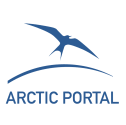Marta Koch
Multilateral climate policymaking and diplomacy has long prioritised countries classified as “developing” or “low-income” by the World Bank and United Nations, channeling climate finance and technical assistance accordingly (World Bank, 2022; UNDP, 2023; Farias, 2022). Yet this framework overlooks critical settings that, despite residing within high income and transition economy nations, are faced with severe environmental and climate related vulnerabilities.
Climate vulnerable settings, from low lying Small Island Developing States (SIDS) in the Pacific, cyclone prone coastal zones in South Asia and flooding-prone areas in Japan (IPCC, 2023), drought hit areas in the Sahel (OECD, 2024), to the melting permafrost and eroding shorelines of the Arctic (WWF, 2023), demand equal policy attention, investment and implementation focus. As the world approaches our final opportunity to limit global warming to 1.5°C, where greenhouse gas emissions must decline 43% by 2030 as per the Paris Agreement (UNFCCC, 2015) and the 2030 deadline for the UN Sustainable Development Goals (SDGs), a set of 17 interconnected global objectives adopted by all UN Member States in 2015 to ensure sustainable development for all by concurrently protecting the planet and ensuring prosperity by 2030 (UN, 2015), policymakers must broaden their lens beyond economic development categorisation to include environmental risk and adaptive capacity (Arctic Council, 2021; IPCC, 2022). This has recently become more pressing as a result of the latest research highlighting how progress across the 17 UN SDGs is fundamentally interconnected and positively correlated in climate vulnerable regions like the Arctic; delays or gaps in climate action often correlate with setbacks in economic, social and governance outcomes (Koch, 2024).
This article highlights the critical Arctic case study, but it is worth applying this globally to all climate-vulnerable settings: international organisations which hold multilateral capacity-building resources such as the United Nations and World Bank Group should update sustainable development frameworks to explicitly prioritise all climate vulnerable settings, in addition to accounting for their economic development classification, ensuring no community is neglected in terms of climate and sustainability action capacity-building and finance.

